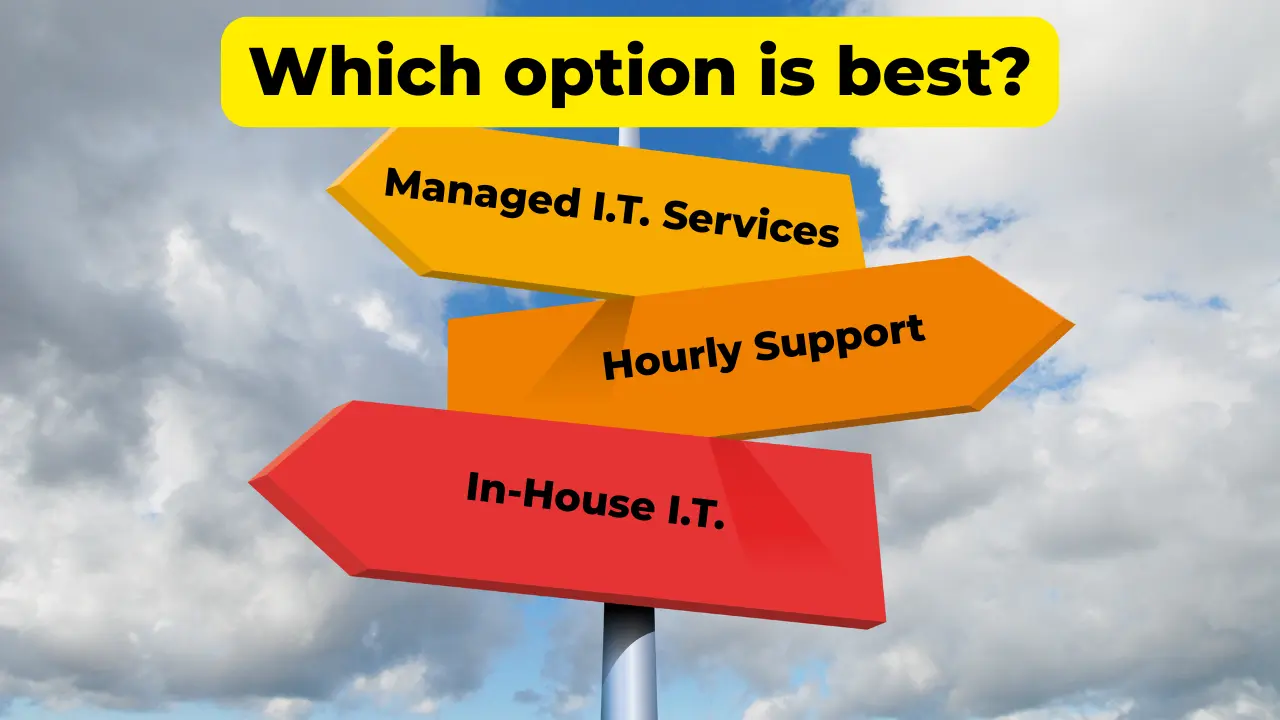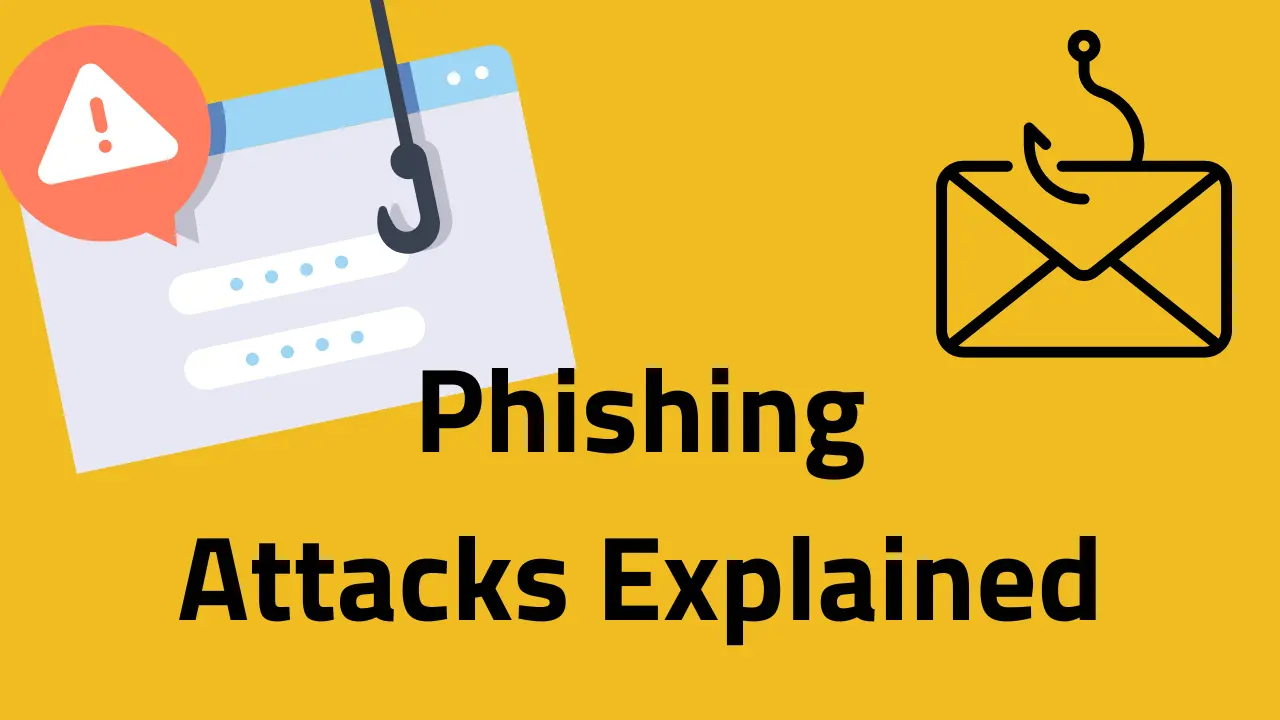
Every year, we speak with countless companies that ask what types of I.T. services they really need for their business. Many of these companies aren’t even aware of the differences between Managed I.T., Hourly I.T., and In-House I.T. or Cybersecurity services. Additionally, there are options for hybrid approaches between these types of I.T. services.
At Sentry CTO, we only offer Managed I.T. and Hybrid I.T. and cybersecurity services. However, we understand that this is not always a good fit for every company. In this article, we’re going to give an honest review of the types of I.T. service models available for businesses and the pros and cons of each option.
Hourly or Break-Fix I.T. Support
Hourly I.T. Support (also known as Break-Fix I.T.) is a pay-as-you-go model where businesses call for help only when issues arise, paying an hourly rate for each service. This model is popular among small businesses due to its flexibility and low upfront costs.
Pros
- No upfront costs: Providers that offer hourly support usually do not require any upfront fees.
- Low commitment: Most companies providing hourly I.T. support do not require a contract. If a contract is required, it is typically for one year or less. This means you can easily switch providers if dissatisfied without penalty.
Cons
- Reactive instead of proactive: Since the provider only works on your system when you request support, they cannot proactively maintain your systems or receive alerts about potential problems on your networks.
- Limited accountability: Hourly I.T. providers have less insight into your daily operations and are less able to provide strategic guidance for implementing new technology or addressing ongoing issues.
- Delayed response times: You may not be prioritized during busy periods, leading to longer downtimes.
Real-World Example
A small retail store experiences a printer malfunction during a busy sales day. The owner calls a local I.T. technician, who fixes the issue within a few hours and charges only for the time spent. The store only pays when problems arise, but lacks ongoing I.T. oversight.
Cybersecurity Implications
Hourly I.T. providers rarely monitor systems proactively, meaning threats may go undetected until after an incident occurs. Security measures are typically implemented only when requested, which increases risk for businesses without dedicated cybersecurity resources.
Managed I.T. Services
Managed I.T. Services involve a fixed monthly fee for ongoing support, system monitoring, maintenance, and often include cybersecurity and data backup solutions. Providers take a hands-on approach, proactively managing technology to prevent problems before they happen.
Pros
- Proactive services: Managed I.T. Services generally include solutions that monitor your systems and alert your provider when problems are detected. This allows for proactive maintenance and responses to issues before they disrupt your team.
- Continuous Improvement: Providers are incentivized to keep your systems running smoothly and up-to-date, driving ongoing service enhancements.
- Outside perspective: Managed I.T. providers can offer a fresh perspective on your business and valuable guidance on how to implement new technologies to support growth.
- Predictable monthly costs: Easier budgeting and financial planning.
Cons
- Long-term contracts: Due to the increased complexity of managed services, providers often require a long-term contract.
- Potential for “one-size-fits-all” solutions: Some MSPs may apply generic solutions that don’t fully align with your business needs.
- Less control over provider’s staff: You often will not have direct oversight of who works on your systems.
Real-World Example
An accounting firm subscribes to a managed I.T. service. The provider installs security software, monitors network activity, and routinely backs up data. When a ransomware attack is detected, the provider acts immediately, restores data from backups, and ensures minimal disruption.
Cybersecurity Implications
Managed service providers typically implement robust cybersecurity measures, including firewalls, threat detection, and patch management, reducing the risk of attacks. Their proactive monitoring helps catch vulnerabilities early, providing stronger protection than reactive approaches.
In-House I.T. Staff
Employing an internal I.T. team means hiring staff to manage all technology needs. Depending on the size and complexity of your business, hiring in-house I.T. staff may be more appropriate than outsourcing. This approach is typically suited for larger organizations or those with complex I.T. needs. It can also be beneficial for rapidly evolving companies that require frequent, large-scale changes to their systems.
Pros
- Full control: With in-house staff, you have complete control over your I.T. team’s activities and priorities.
- Immediate response: On-site staff can address issues quickly, minimizing downtime.
- Deep business knowledge: Internal teams understand your company’s culture, workflows, and strategic goals.
- Customization: You can tailor your solutions precisely to your needs and preferences.
Cons
- Hidden costs: In addition to payroll taxes and benefits, you may face extra expenses such as purchasing tools, licenses, and security solutions for your I.T. department.
- Leadership expertise: Leading an in-house I.T. team effectively requires significant technical expertise. Without it, your I.T. and cybersecurity solutions may not meet necessary standards.
- Recruitment and retention challenges: Finding and keeping skilled I.T. professionals on staff can be difficult and expensive.
Real-World Example
A manufacturing company with multiple locations employs two full-time I.T. professionals. They manage software updates, troubleshoot network issues, and deploy new systems tailored to the company’s needs. The team is on site, enabling quick fixes and customized solutions.
Cybersecurity Implications
In-house teams can tailor security measures to the business, but their effectiveness depends on expertise and available resources. Without ongoing training and investment, in-house staff may struggle to keep up with evolving threats or industry best practices.
Hybrid I.T. and Cybersecurity Model
The hybrid model combines in-house I.T. personnel with outsourced managed service providers, often for specialized tasks like cybersecurity. This approach is ideal for growing businesses with complex needs, offering both daily support and advanced expertise.
Pros
- Expert support for your team: Outsourced providers can offer additional expertise to your in-house team, making it easier and faster to implement new technology.
- Division of labor: Many in-house I.T. teams appreciate this model because it allows them to concentrate on daily operations while still addressing cybersecurity and other high-level tasks.
Cons
- Higher overall expense: This model is often one of the most costly, as it requires a robust I.T. budget to cover both internal staffing and monthly fees for the outsourced provider.
- Complex coordination: Managing multiple providers and internal staff can lead to communication challenges and unclear responsibilities.
Real-World Example
A healthcare clinic employs an internal I.T. coordinator for daily tech issues but contracts with a managed provider for cybersecurity. The in-house staff handles hardware repairs and employee support, while the outside team manages HIPAA compliance, threat monitoring, and incident response.
Cybersecurity Implications
Hybrid models offer comprehensive security by pairing on-the-ground support with specialized expertise. Outsourced providers bring advanced tools and up-to-date practices, while internal staff ensures quick responses to immediate needs. This layered defense is especially valuable in high-risk industries.
Comparative Summary: I.T. Service Models
| Model | Cost Structure | Support Type | Cybersecurity Approach | Best For |
| Hourly I.T. Support | Pay-as-needed | Reactive | Basic, upon request | Small businesses with limited tech needs |
| Managed I.T. Services | Fixed monthly fee | Proactive & strategic | Comprehensive, ongoing monitoring | Growing businesses seeking reliability |
| In-House I.T. Staff | Salaries, benefits, tools | Custom, immediate response | Tailored, depends on expertise | Large or complex organizations |
| Hybrid Model | Combined costs (staff + provider) | Split: daily & specialized support | Layered, expert-led + internal | Businesses with advanced needs & growth |
Summary & Recommendations
Choosing the right I.T. service model depends on your business size, complexity, and growth goals:
- Small businesses with basic technology needs and limited budgets may benefit from Hourly I.T. Support. However, they should consider adding basic cybersecurity solutions to prevent costly incidents.
- Growing businesses that want stability and proactive support should consider Managed I.T. Services to get strategic guidance and strong cybersecurity protection.
- Larger organizations or those with highly specialized needs may prefer In-House I.T. Staff, but must invest in ongoing training and security resources to stay protected.
- Companies facing complex regulatory or cybersecurity challenges—such as healthcare, finance, or those undergoing rapid expansion—often find the Hybrid Model delivers the best of both worlds, combining daily support with expert cybersecurity.
Why Cybersecurity Matters: No matter the model, cybersecurity is essential for protecting business data and reputation. Hourly support may leave gaps, while managed services and hybrid approaches provide more robust, proactive defenses. In-house teams must prioritize training and resources to stay ahead of threats. Ultimately, the right I.T. service model should balance cost, expertise, and security to fit your business’s unique needs.
Closing Thought: It’s also worth mentioning that no matter which type of I.T. and cybersecurity services you select, finding the right I.T. & Cybersecurity provider is one of the most important decisions you can make. Take your time to ensure your provider is a good fit for your company culture and business goals.




